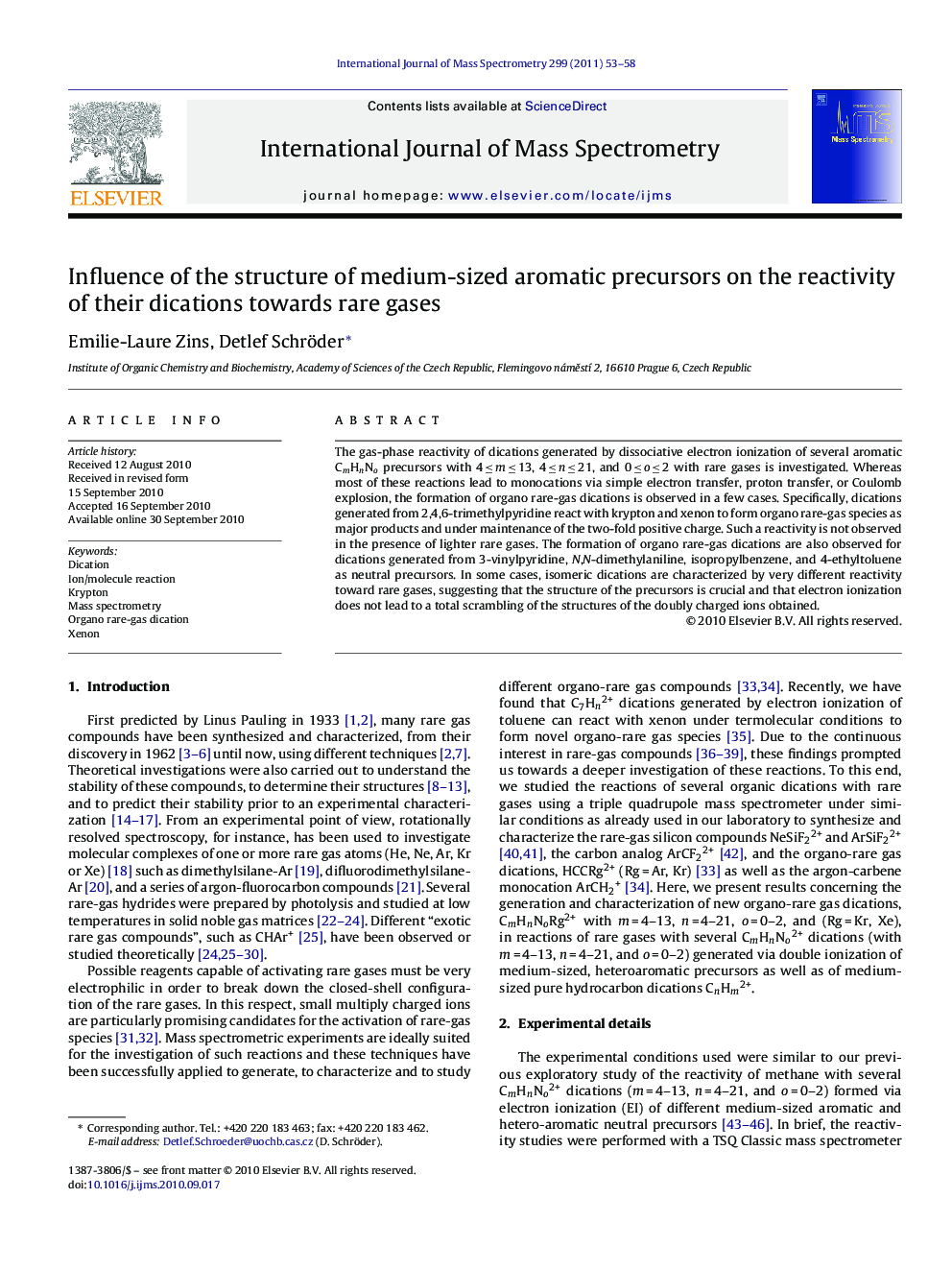| Article ID | Journal | Published Year | Pages | File Type |
|---|---|---|---|---|
| 1193415 | International Journal of Mass Spectrometry | 2011 | 6 Pages |
The gas-phase reactivity of dications generated by dissociative electron ionization of several aromatic CmHnNo precursors with 4 ≤ m ≤ 13, 4 ≤ n ≤ 21, and 0 ≤ o ≤ 2 with rare gases is investigated. Whereas most of these reactions lead to monocations via simple electron transfer, proton transfer, or Coulomb explosion, the formation of organo rare-gas dications is observed in a few cases. Specifically, dications generated from 2,4,6-trimethylpyridine react with krypton and xenon to form organo rare-gas species as major products and under maintenance of the two-fold positive charge. Such a reactivity is not observed in the presence of lighter rare gases. The formation of organo rare-gas dications are also observed for dications generated from 3-vinylpyridine, N,N-dimethylaniline, isopropylbenzene, and 4-ethyltoluene as neutral precursors. In some cases, isomeric dications are characterized by very different reactivity toward rare gases, suggesting that the structure of the precursors is crucial and that electron ionization does not lead to a total scrambling of the structures of the doubly charged ions obtained.
Graphical abstractAmong more than 100 dications generated from medium-sized aromatic CmHnNo precursors, a few are found to react with krypton and xenon to form novel organo rare-gas dications.Figure optionsDownload full-size imageDownload high-quality image (137 K)Download as PowerPoint slideResearch highlights▶ Several aromatic dications yield organoxenon species. ▶ Few organokrypton species also accessbile. ▶ Bond formation with rare gases as termolecular processes.
